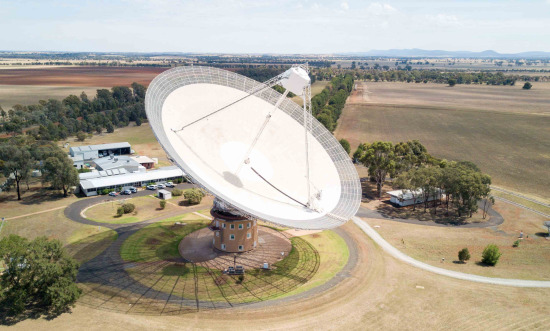
Parkes has been continually upgraded throughout its lifetime and is one of the world's most productive radio telescopes. /Photo via CSIRO
"While some of us are timing a pulsar, other astronomers could be looking for the signs of newborn stars," Dr. Hobbs said.
Pulsars are neutron stars that emit radio waves, and scientists monitor them in order to study extreme states of matter, search for planets beyond Earth's solar system and measure cosmic distances.
The Parkes radio telescope, with a diameter of 64 meters, is one of the largest single-dish telescopes in the southern hemisphere. It has found some of the most known pulsars and discovered a new spiral arm in the galaxy.


















































